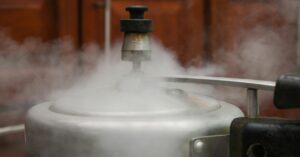This Indian American Scientist has Devised a Method for Better Diagnosis of Cancer
Cancer detection just took a leap in its development with an Indian student of University of Illinois using a technique called infrared spectroscopic imaging for microscopy to reduce the material cost, time and effort spent in cancer detection biopsies.

A new technique developed by an Indian American scientist, Rohit Bhargava, will help in quicker and better diagnosis of cancer.
Cancer detection took a leap forward when an Indian American scientist working at University of Illinois, used infrared spectroscopic imaging for microscopy to significantly reduce the material cost, time and effort spent in cancer detection biopsies.
Rohit Bhargava, along with his team has come up with the method of stainless staining that will aid clinicians and researchers in better diagnosis of cancer.

Source: news.illinois.edu
Bhargava is a professor of Bioengineering at University of Illinois and member of the Beckman Institute for Advanced Science and Technology.
The method that was being used to detect cancer till date is a rudimentary one, wherein the prepared biopsy samples are stained and examined under a light microscope. Staining is a long and demanding process, which also damages the cells in some aspect. Also, it is not possible to stain the limited sample multiple times, hence forcing the doctors to be selective in their choice of testing.
But now, Bhargava and team have developed a new method which measures the chemical constitution of cells and tissues directly without using any staining .The computer then translates spectral information from the microscope into chemical stain patterns, without applying dyes to the cells which enables researchers to see the molecular contrast of the tissue. The usage of infrared and optical imaging are usually considered two distinct methods within pathology, however, the study by Bhargava is a testimony to the link between them. Bhargava’s official comment read that this would allow the user to choose the best method to address their needs.
According to the team leading the study (including Bhargava) the new cancer detection method promises to have immediate and long term effects in the research and clinical practices of pathology and multiplexed molecular sciences.
Like this story? Or have something to share? Write to us: [email protected], or connect with us on Facebook and Twitter (@thebetterindia).
This story made me
- 97
- 121
- 89
- 167
Tell Us More
We bring stories straight from the heart of India, to inspire millions and create a wave of impact. Our positive movement is growing bigger everyday, and we would love for you to join it.
Please contribute whatever you can, every little penny helps our team in bringing you more stories that support dreams and spread hope.


















